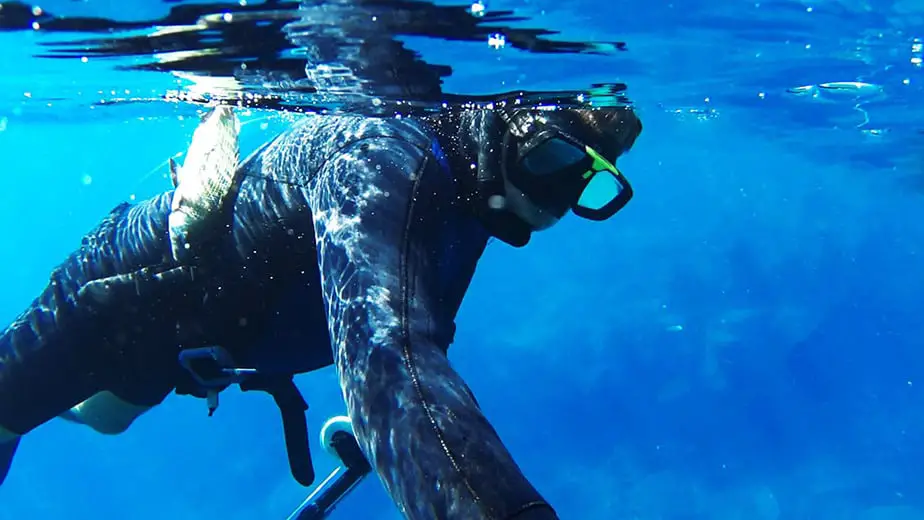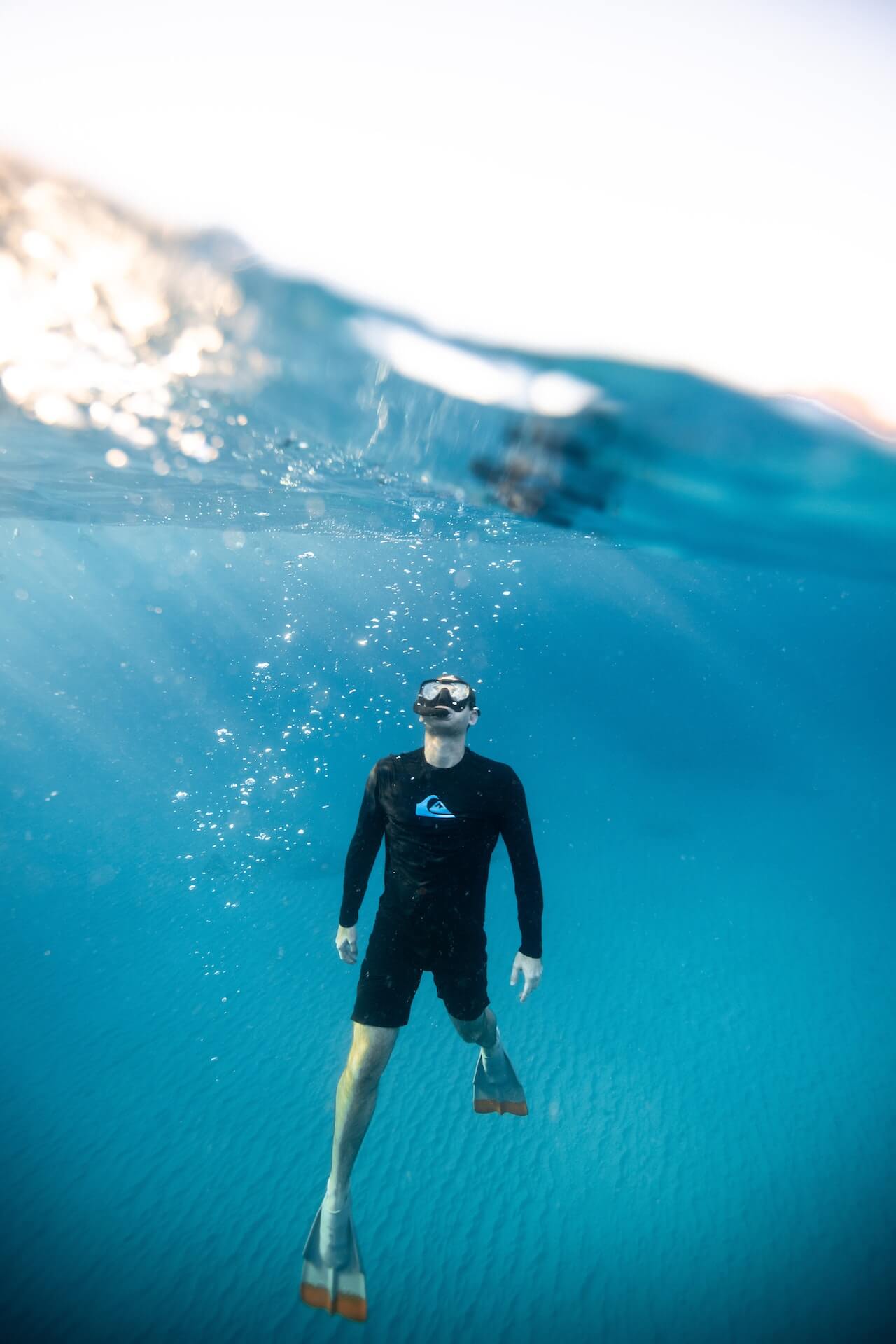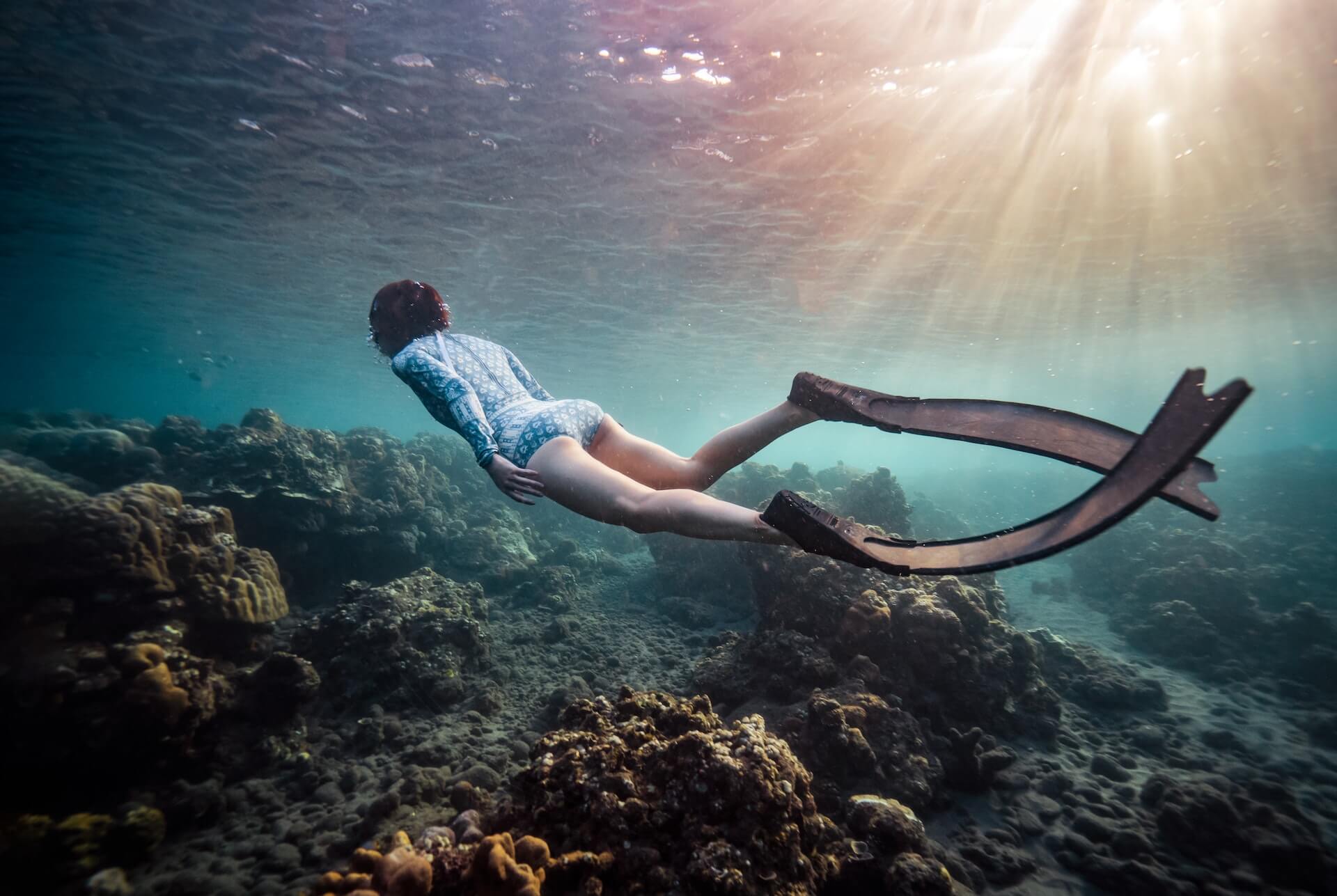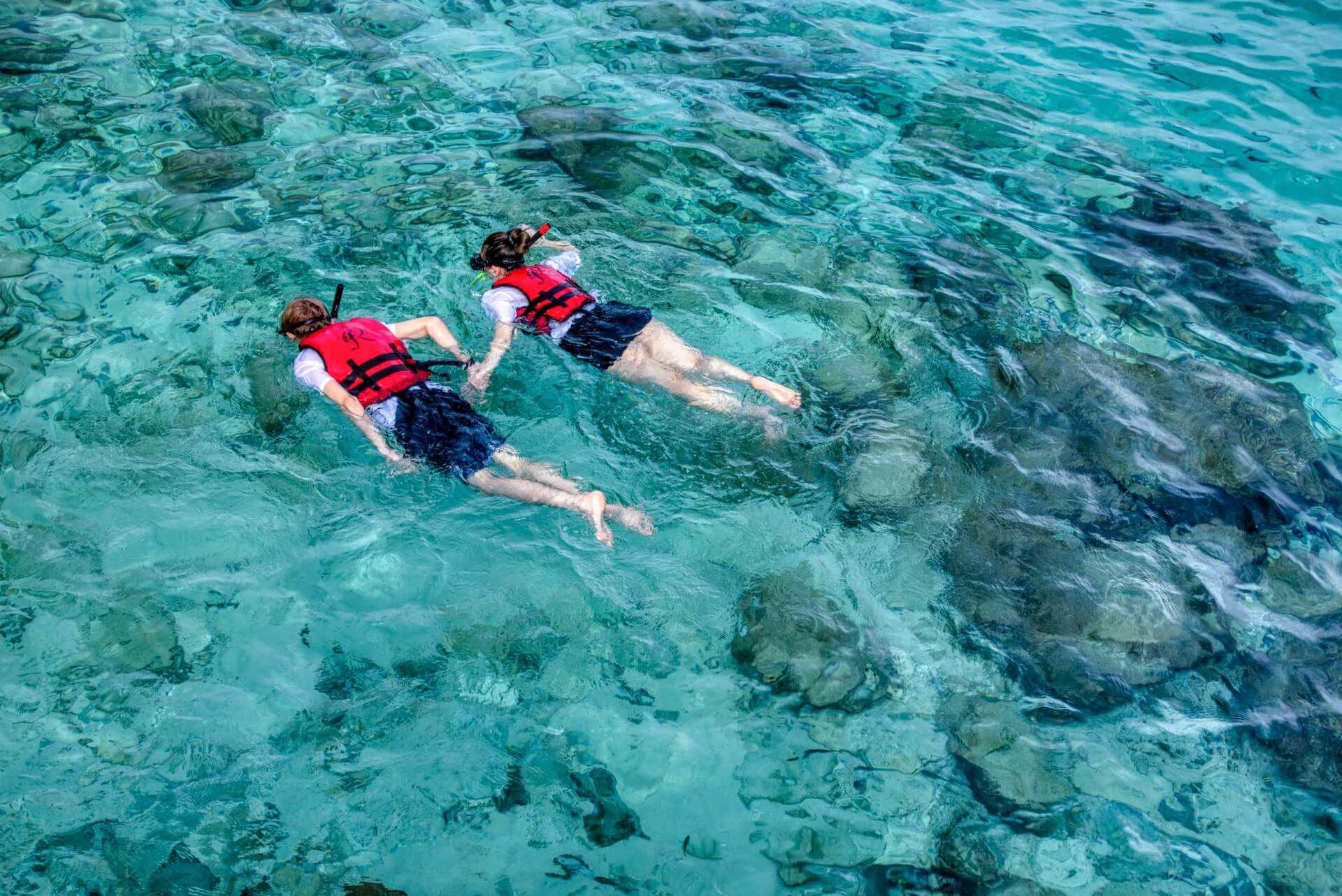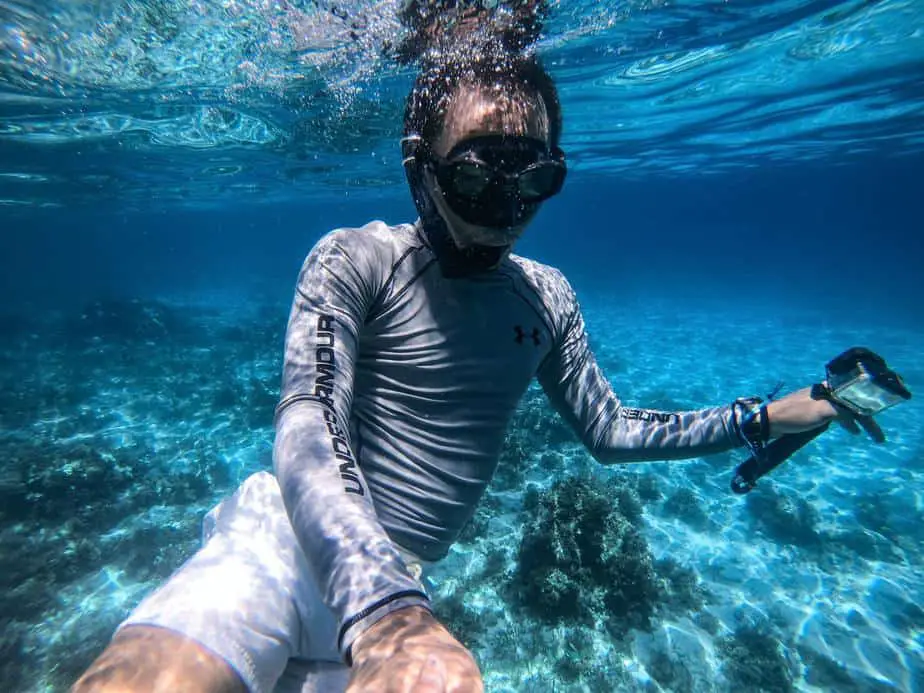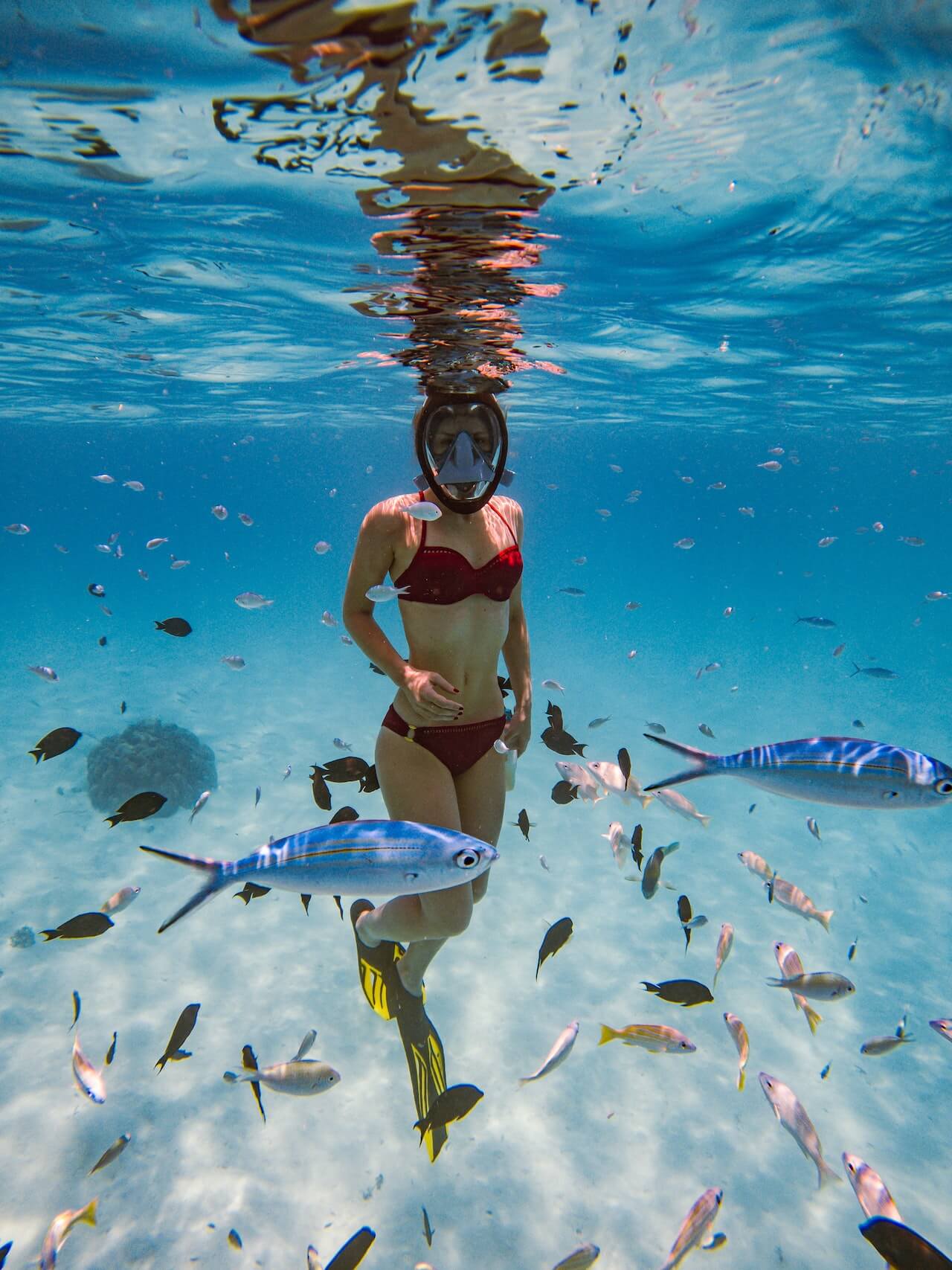When planning a vacation to Hawaii, one question that might come to your mind is whether or not you need to wear water shoes while enjoying the beautiful beaches and engaging in water activities. Water shoes can be a useful accessory, offering protection against sharp rocks and coral, while also giving you better grip on slippery surfaces.
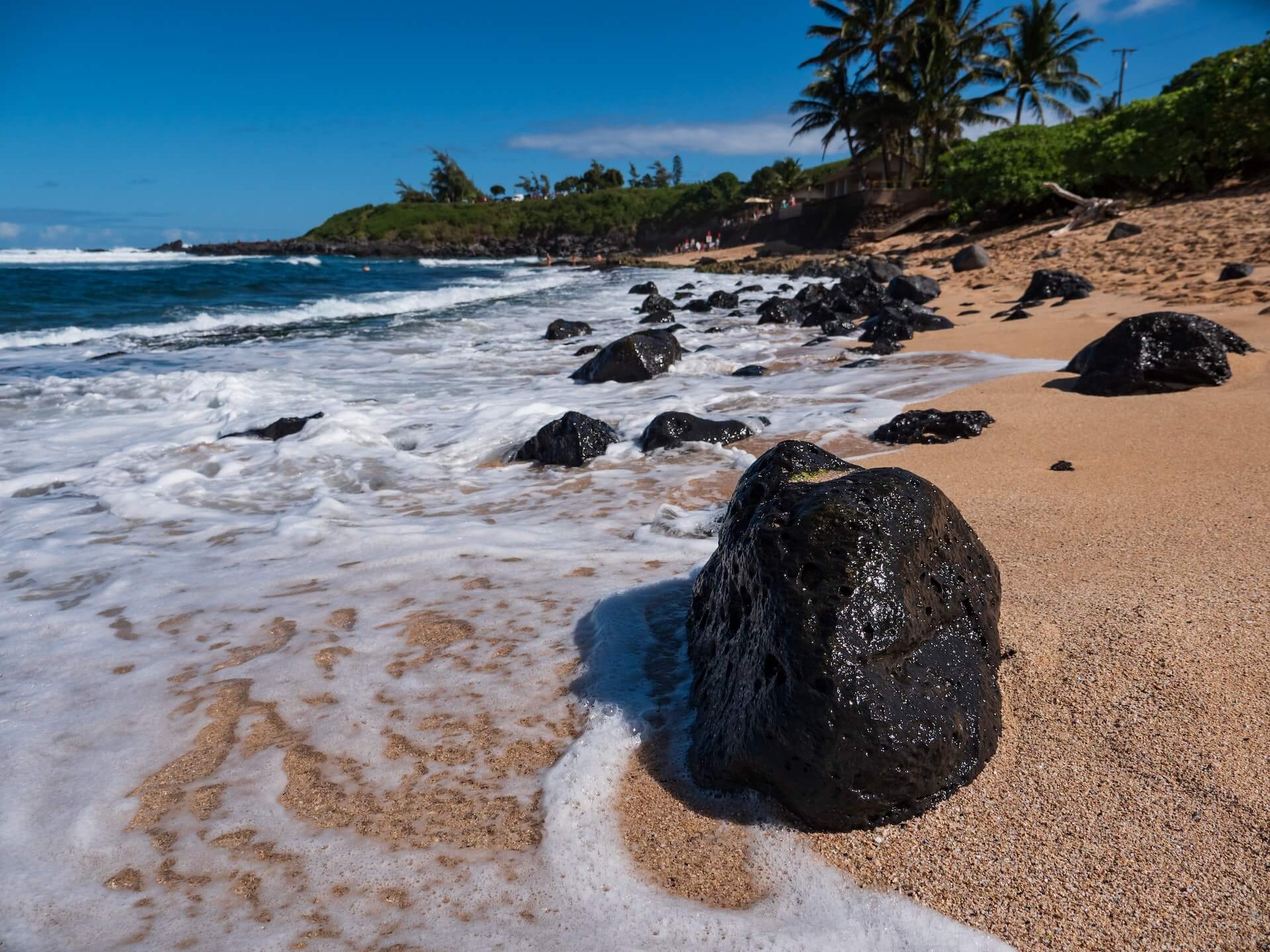
You don’t need to wear water shoes in Hawaii. If you’re just planning to sunbathe and take casual dips in the ocean, they are good to have but not needed. However, if you’re going to be snorkeling, surfing, or exploring rocky shorelines, wearing water shoes would be a wise decision to help protect your feet from potential injuries.
It’s worth mentioning that some beaches in Hawaii are known for having lava rock and hidden rocky areas beneath the sand. This might make you consider wearing water shoes even when you’re not engaging in any specific water sports.
In this article, we will go over why we recommend you wear water shoes in Hawaii, and the risks of not doing so.
Water Shoes in Hawaii – Required or Not?

When visiting the beautiful beaches of Hawaii, you might wonder if water shoes are necessary. In some situations, wearing water shoes can greatly enhance your beach experience and provide you with much-needed safety.
Water shoes offer protection for your feet from sharp rocks, coral reefs, or other hazards hidden beneath the ocean’s surface. This makes swimming and exploring more comfortable and enjoyable. Additionally, water shoes provide better traction and grip, which is essential when navigating wet and slippery rocks.
Hawaii is famous for its diverse marine life, so extra care must be taken to preserve the delicate coral ecosystems when visiting. Wearing water shoes helps prevent accidental damage to coral reefs, as they provide better footing and discourage you from stepping on fragile structures.
Despite their benefits, not everyone chooses to wear water shoes in Hawaii. Some local residents and visitors have never worn water shoes and only stand on sand while in the water. If you plan to spend most of your time on sandy beaches and don’t intend to walk on coral or rocks, water shoes might not be necessary for you.
Benefits of Wearing Water Shoes in Hawaii
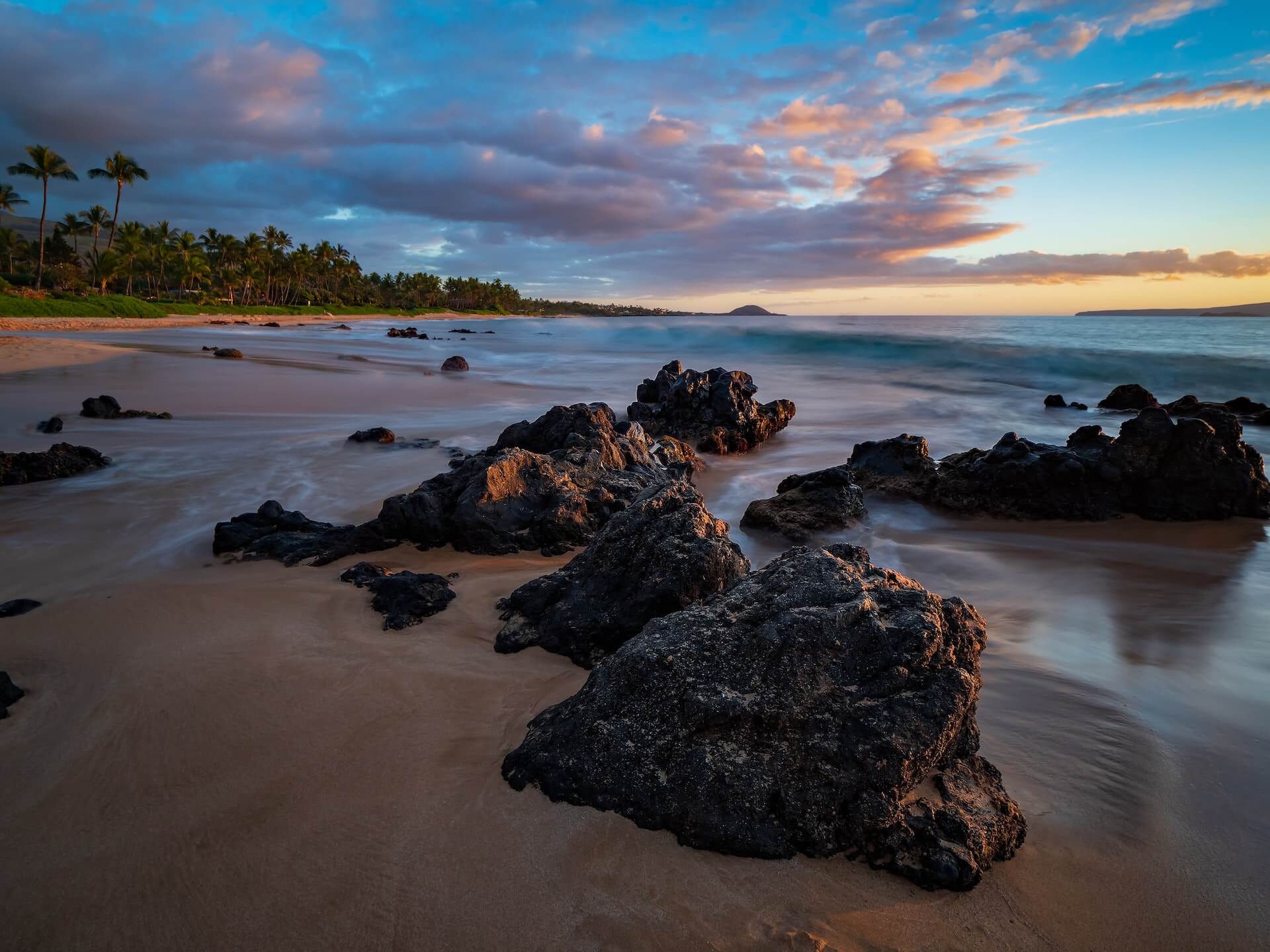
Protection Against Sharp Rocks & Coral
Hawaii is renowned for its pristine beaches, but many of its coastal and underwater landscapes feature sharp rocks and delicate coral formations.
Locations like Hanauma Bay on Oahu are popular for snorkeling due to the vibrant marine life around the coral reefs. However, walking or stepping on these can not only damage the ecosystem but can also lead to painful injuries. Sharp edges can lead to cuts, abrasions, or even more severe wounds.
Wearing water shoes provides a protective barrier between your feet and these potentially harmful surfaces, ensuring that you can explore the ocean floor with confidence and without causing unintended harm to the marine environment.
Enhanced Traction on Slippery Surfaces
The beautiful coastlines and tide pools of Hawaii often come with wet and slippery surfaces. Whether you’re navigating the tide pools near the Banzai Pipeline or venturing over wet lava rocks at Punalu’u Black Sand Beach on the Big Island, the risk of slipping and getting injured is real.
Traditional sandals or bare feet might not offer the grip required on these surfaces. Water shoes are specifically designed with soles that provide better traction on wet and uneven terrains. This means you can walk, hike, or explore with greater stability, making your adventures both safer and more enjoyable.
Prevention of Cuts from Hidden Debris
Not all dangers on Hawaiian beaches are natural. Over time, popular spots like Waikiki or Lanikai on Oahu might accumulate human-made debris, such as broken glass, discarded can tabs, or even sharp pieces of metal. Besides the obvious pain, stepping on such items can lead to infections if not treated properly.
Water shoes act as a shield for your feet, ensuring that even if you accidentally step on such debris, the chances of it piercing through and causing injury are significantly reduced. This added layer of protection lets you roam the beaches with greater peace of mind.
Thermal Protection
Hawaii’s diverse landscape ranges from hot sand beaches to areas with volcanic activity. For instance, the sands of Kekaha on Kauai can become scorching under the sun, while regions near volcanic areas like those in Hawaii Volcanoes National Park can have patches of ground that are surprisingly warm.
In these conditions, the ground can become uncomfortably hot for bare feet or even melt certain types of footwear. Water shoes, especially those with thicker soles, offer a barrier against these temperature extremes. The material insulates your feet, ensuring that you’re shielded from extreme cold or heat, allowing you to comfortably traverse a wider range of terrains.
Reduced Risk of Infection
Hawaii’s natural beauty isn’t limited to its beaches. Freshwater streams and ponds, such as those found in Waimea Valley on Oahu, offer a refreshing change of scenery. However, standing or wading water can sometimes be a breeding ground for bacteria or parasites.
Without proper protection, there’s a risk of contracting infections like leptospirosis, which can lead to severe symptoms if untreated.
Water shoes can act as a barrier, significantly reducing the risk of harmful organisms entering through cuts or openings in the feet. By wearing them, you ensure a safer and healthier exploration of Hawaii’s diverse water bodies.
Support During Water Activities
Hawaii offers a plethora of water activities, from paddleboarding to kayaking, each presenting its own set of challenges. For instance, while paddleboarding in Hanalei Bay, Kauai, or kayaking in the Makena area of Maui, you might encounter areas with submerged rocks, corals, or branches.
These can be tricky and potentially harmful if one is not careful. Water shoes are not just about protection; they offer structural support to the feet, ensuring a firmer grip on the board or kayak, and reduce the risk of foot injuries. The reinforced soles provide a cushion against hard surfaces and give better control, enhancing the overall experience of these water sports.
Comfort on Varied Terrains
Hawaii’s diverse landscape is not just limited to its beaches. The islands offer numerous hiking trails and excursions, many of which transition between wet and dry conditions.
Trails like the Kalalau on Kauai or the Pipiwai Trail on Maui might require crossing streams, muddy patches, or damp caves. Traditional hiking shoes can become heavy and uncomfortable when wet, and sandals might not offer enough protection.
Water shoes strike a balance between the two. Designed to be lightweight, quick-drying, and protective, they ensure that your feet remain comfortable regardless of the changing terrains, making them an ideal choice for such varied expeditions.
Longevity of Your Adventure
The feeling of squelchy, waterlogged shoes can be a significant deterrent to continuing an adventure. Hawaii’s unpredictable rain showers or an unexpected splash at a beach like Makalawena on the Big Island can quickly turn a comfortable shoe soggy.
Water shoes are designed with materials that repel water and have quick-drying properties. This ensures that even if they get wet, they won’t remain that way for long.
By wearing water shoes, you can ensure that minor inconveniences don’t end your explorations prematurely, and you can make the most of your time in Hawaii.
Protection Against Sunburn
Hawaii’s tropical location and clear skies make it a sun-lover’s paradise. However, the same sun can be harsh, especially on sensitive areas like the tops of the feet, which many often forget to protect.
Prolonged exposure can lead to painful sunburns, and in extreme cases, blisters. Water shoes offer an additional layer of protection against the sun’s harmful UV rays.
While it’s always advisable to apply sunscreen, water shoes can act as a physical barrier, reducing the risk of sunburn on the feet, ensuring that you can lounge or play on the beach without the after-effects of painful burns.
Wildlife Conservation
Hawaii’s beaches and underwater realms are home to a diverse range of marine life, some of which are endangered or vulnerable. Locations like those in the Papahānaumokuākea Marine National Monument offer glimpses of rare species that need to be preserved.
Walking barefoot or with inappropriate footwear increases the risk of inadvertently stepping on and harming these creatures or their habitats.
Water shoes provide a more controlled and even surface area, reducing the chance of causing harm. By wearing them, you’re not just ensuring your safety but also playing a part in conserving Hawaii’s unique marine ecosystem.
Frequently Asked Questions
Can I just wear sneakers or sandals in Hawaiian waters?
Yes, you can technically wear regular sneakers or sandals in Hawaiian waters, but they may not be the best choice for several reasons.
- Protection: Regular sneakers and sandals don’t typically offer the same level of protection against sharp rocks, coral, sea urchins, and other underwater hazards as water shoes do. Water shoes are specifically designed with thick and protective soles for underwater environments.
- Comfort: Once regular sneakers get wet, they tend to become heavy and can take a long time to dry. This can be uncomfortable if you’re transitioning between water and land activities. Sandals, on the other hand, may not provide sufficient grip on wet and rocky surfaces.
- Durability: Salt water can be harsh on the materials used in regular sneakers and sandals. Continuous exposure may lead to faster wear and tear, whereas water shoes are constructed with materials that resist the damaging effects of salt water.
- Safety: Without the grip that water shoes offer, there’s a higher risk of slipping on wet rocks or surfaces, potentially leading to injuries.
What marine hazards can water shoes protect against in Hawaii?
Water shoes can protect against a range of marine hazards in Hawaii, including:
- Coral Reefs: Coral can be sharp and may cause painful cuts or scrapes if you accidentally step on or brush against them. Water shoes offer a protective barrier against these risks.
- Sea Urchins: These marine creatures have spines that can easily puncture the skin, causing pain and potentially leading to infections. A sturdy sole in water shoes can help prevent such punctures.
- Sharp Rocks: Many Hawaiian beaches and shorelines have areas with sharp rocks. These rocks can be slippery and dangerous to walk on barefoot or with inadequate footwear.
- Jellyfish and other stinging organisms: While water shoes won’t provide full protection against jellyfish stings, they can minimize contact with tentacles if one happens to float near your feet.
- Hot Sand: The sun can heat the sand to high temperatures, which can be painful to walk on. Water shoes can offer protection against this.
Are there any specific Hawaiian activities or tours that require water shoes?
Yes, certain activities and tours in Hawaii either recommend or require participants to wear water shoes:
- Snorkeling Tours: Many snorkeling spots in Hawaii are located near coral reefs. To protect both the reef and the snorkeler, water shoes can be essential.
- Hiking to Waterfalls: Some waterfall hikes involve crossing streams or walking on slippery rocks. Water shoes offer better grip and keep feet protected.
- Kayaking or Canoeing: When getting in and out of the water or if you need to pull your kayak/canoe onto a rocky area, water shoes are beneficial.
- Cave Explorations: Some tours that explore sea caves or lava tubes might involve wading through water. Here, water shoes can protect against sharp rocks and provide better footing.
- Beachcombing: If you’re exploring tide pools or rocky shorelines, water shoes can provide better protection than regular sandals or flip-flops.
Can water shoes be rented in Hawaii, or should I bring my own?
Both options are available. Many tour operators, especially those offering water-based activities like snorkeling or kayaking, often have water shoes available for rent. However, there are a few reasons you might consider bringing your own:
- Fit and Comfort: Like any footwear, water shoes need to fit well to be comfortable and effective. Bringing your own ensures that you’ve chosen a pair that fits your feet perfectly.
- Availability: While rentals are common, there’s no guarantee that a tour operator will have the exact size you need, especially during peak tourist seasons.
- Hygiene: Even though rental shoes are typically cleaned between uses, some people prefer the peace of mind that comes with wearing their own footwear.
- Cost: If you plan on participating in multiple water activities or spending significant time in the water, buying a pair might be more cost-effective than renting multiple times.
While rentals are convenient, especially if you’re trying to save space in your luggage, bringing your own pair of water shoes can offer advantages in terms of fit, comfort, and overall value.
Sources:


